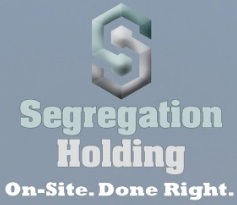Cost segregation benefits go beyond increased cash flow by far. There are several reasons for this, not to mention reduced or temporarily eliminated income taxes.
These cost segregation benefits would include reduced real estate taxes, lower insurance premiums, IRS tax compliance, and an itemized listing of assets. The latter provides the business owner a verifiable asset report that is valuable for valuation purposes. A cost segregation study provides the commercial property owner (CRE) with an opportunity.
With rare exception, investors of CRE leave money on the table when buying or selling commercial real estate. Rather than explore the option of applying cost segregation prior to purchase, when it makes the most sense, cost segregation becomes an after-thought. Of course, cost segregation delivers results every time it’s applied. However, when cost segregation is applied on CRE already owned, it becomes a “look-back” cost segregation study.
The positive outcome of performing a cost segregation look-back study is that all remaining years of depreciation are accelerated into the current tax year. If the property has been owned for 6 years or longer, as an example, then the majority of the remaining depreciation is now earned and credited immediately. On the other hand, had a cost segregation study been performed “prior” to purchase, the investor would have lowered operating expenses. Correspondingly the cash flow is improved adding to the bottom-line ROI. Isn’t that what investing is about?
Of course it is; but the truth is there are trillions of dollars in accelerated depreciation unused…ever. Whether cost segregation is unknown to the general public or simply misunderstood, cost seg is a tool not being applied. The opportunity to utilized cost segregation is growing daily, however. More and more, cost segregation is being embraced by CPAs and tax attorneys. Cost segregation engineering firms are popping up everywhere. But what is the opportunity? Simple.
Investors in commercial real estate seek the highest return on investment possible…who doesn’t? Cost segregation is a legitimate means by which to increase ROI  that has been around over 20 years. The IRS endorses engineer-based, engineer-conducted cost segregation studies. In the last 5 years, cost segregation studies have become more economical to engage. Competition, improved processes, and better techniques all contribute to this. The result is that cost segregation increases ROI. And when the investor considers cost segregation delivers 1000% ROIs and greater, why would it not become the first consideration when looking for commercial property?
that has been around over 20 years. The IRS endorses engineer-based, engineer-conducted cost segregation studies. In the last 5 years, cost segregation studies have become more economical to engage. Competition, improved processes, and better techniques all contribute to this. The result is that cost segregation increases ROI. And when the investor considers cost segregation delivers 1000% ROIs and greater, why would it not become the first consideration when looking for commercial property?
So how does cost segregation go beyond increased cash flow? Many investors buy property with the intent to eventually sell. Whether the property is a “fixer-upper” or simply undervalued for whatever reason, the purchase has the goal of becoming a sale in the future. When the savvy investor applies cost segregation he then has the proper tax-basis from which to sell. Now, a commercial realtor professional can market the property offering “cash at closing” to a potential buyer. Utilizing the current cost segregation study as the basis, the reclassified asset percentages can be applied to the asking price of the property. The resulting accelerated depreciation gives immediate income tax credits to a qualified buyer. Those tax benefits pass to the buyer at closing and the cost segregation study is submitted to the IRS for crediting.
For more details on how to apply cost segregation, contact us at:
[email protected]
Segregation Holding
Twitter
or call 972-897-8019


